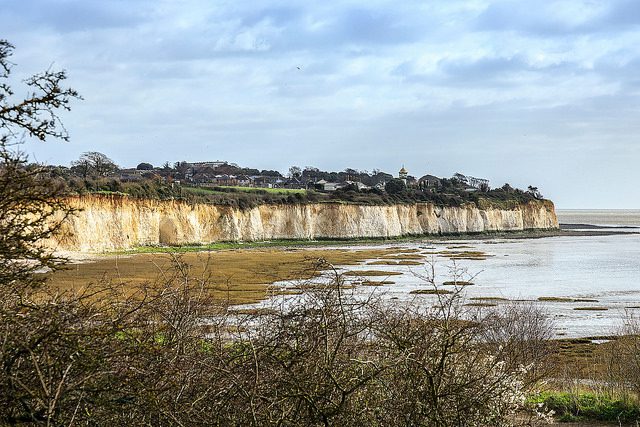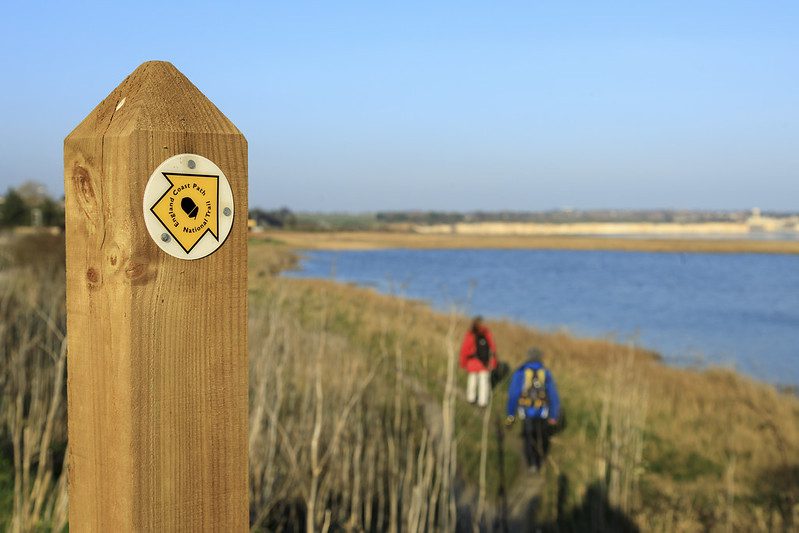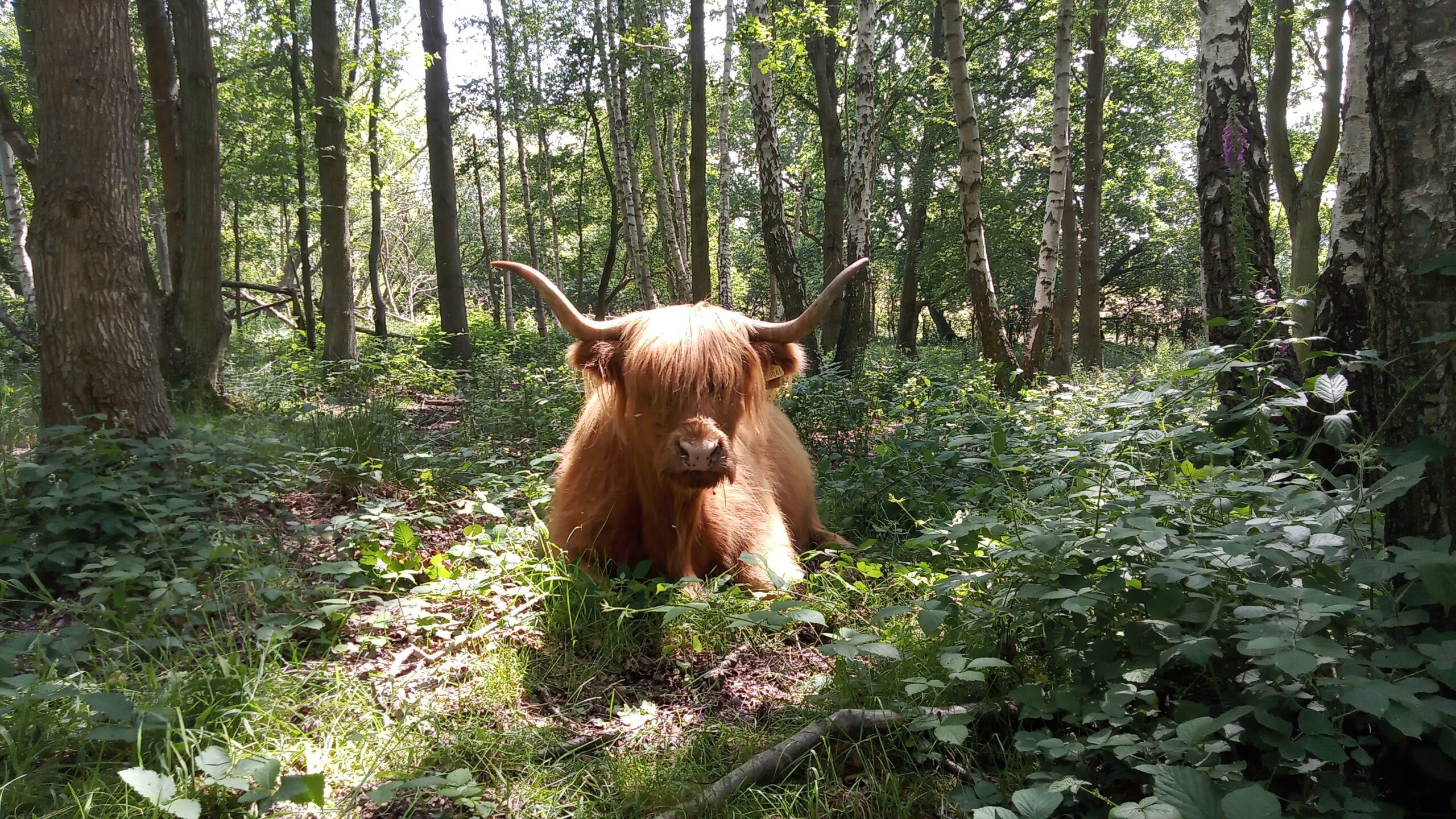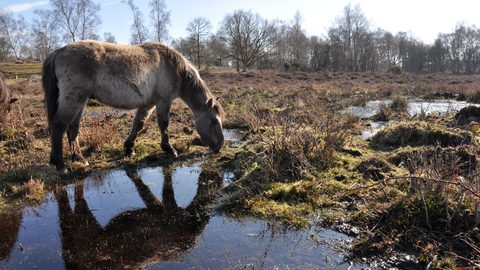Go wild this summer at your local Kent Wildlife Trust reserve

4th July 2023
Kent Wildlife Trust manages over 9,000 acres at more than 80 different sites and nature reserves. The charity uses nature-positive management to ensure that the reserves remain a sanctuary for Kent’s rarest and most vulnerable plants and animals. A visit to a Kent Wildlife Trust reserves promise the birds and the bees, and everything in between!
Here are our Top 5 Wild Walks, guaranteed to inspire you to spend more time in nature:
Where: Ramsgate
When to visit: All year round – winter for observing migratory birds
Sandwich and Pegwell Bay boasts saltmarsh and mudflats, sand dunes and coastal habitats. With an on-site café, toilets and playground, the site is perfect for families looking to connect with nature. Bird enthusiasts can make use of the site’s well-situated bird hide, where shelduck, brent goose and black-tailed godwits can be spotted feeding. A glance to the sky above may reveal hovering kestrels and the occasional heron flying overhead.
Around the coastline, populations of both grey seals and common seals may be seen bobbing around in the sea or resting on our sandbanks and beaches. These charismatic creatures are a joy to watch, so pack your best pair of binoculars! Both grey and common seals are sensitive to disturbance. For tips on viewing Sandwich’s seals responsibility, head to How to watch seals safely | Kent Wildlife Trust.
West Kent: Fawke – Bitchet – Seal Chart
Where: Sevenoaks
When to visit: May – November
The Greensand Commons of Sevenoaks and Westerham feature some of Kent’s rarest habitats, including lowland heathland – which is even rarer than Amazonian rainforest! There are eight sites to discover, but the avid walker can easily explore several in one visit. An invigorating trail can be walked through Fawke, Bitchet and Seal Chart Commons. The woodland is home to ancient trees that support a wide range of insects, perfect for a family bug hunt!
Bitchet Common is home to adders, slow worms, grass snakes, frogs, toads, palmate newts and newts, making it possible to encounter these elusive cold-blooded animals during your visit. Seal Chart is popular with flocks of chatty blue, great and long-tailed tits. 11 of Kent’s 15 bat species have been recorded here too, so whether you are a fan of rare insects, funky fungi or mysterious British mammals, Seal Chart has something to offer every nature lover.
Where: Gillingham
When to visit: May – August
Sweeping panoramic views are not what you expect to find in the heart of the Medway towns, but this site has long defied convention. Darland Banks is overflowing with plant life and is renowned for housing the UK’s largest population of man orchids. Butterflies, bees and a plethora of beetles flock to the banks, attracted by the many wildflowers that grow there.
Comprised of a mix of restored chalk grassland and woodland, Darland Banks is a sanctuary to some of Kent’s most threatened plants and animals. The woodland provides a shady walk on a sunny day; visit the edge of the woodland that overlooks the grassy banks for a chance to spot a green woodpecker hunting for ants! Great spotted woodpeckers may be seen deeper in the woodland, or heard pecking at tree trunks on a mission for juicy grubs. Smaller species, such as chaffinches, wrens, blue tits and the vibrant yellowhammer can be observed too.
Accessible Walk: Triangle Trail at Hothfield Heathlands
Where: Ashford
When to visit: All year round
A visit to Hothfield Heathlands is a visit to Kent’s last four valley bogs and one of its few remaining fragments of open heath, grazed by cattle, ponies and sheep, including charming Highland cows. Some 86-hectares can be explored via four way-marked routes, including an accessible Triangle Trail. On this 500m long route, visitors can enjoy the reserve from a smooth, even surface path.
Spreading oak and sweet chestnut trees are home to great spotted woodpecker, nuthatch and spotted flycatchers, who nest in their nooks and crannies. During the spring and summer swathes of flowers bloom in open glades, heather covers the landscape in pinks and purples and butterflies are common visitors. You may be struck by the sweet smell of coconut that is produced by golden bushes of gorse, where Yellowhammers, white throat and willow warblers like to perch and sing.
Where: Maidstone
When to visit: April – July, September – November
Westfield Wood presents a challenging yet rewarding walk through an internationally important yew woodland. Yews are one of the UK’s five native evergreen trees, and their large numbers at Westfield Wood create a still, quiet and cool woodland. Did you know that tree coverage can cool the air underneath by 2ºC – 8ºC? As you escape the summer sun, small mammals, insects, birds and reptiles will be taking advantage of the shade too!
The many holes and crevices found in the ancient trees of Westfield Wood provide shelter to nesting birds and roosting bats. Long-tailed tits, nuthatches, chaffinches, robins, great tits, blue tits, rooks, crows, and the UK’s smallest birds, the goldcrest, can be observed here. Visit Westfield Wood at dusk or dawn to enjoy a melodic performance from the woodland’s songbirds.
Written by: Aimee Howe, Kent Wildlife Trust
Photographs: Kent Wildlife Trust, Explore Kent
Popular articles
Walking the Pilgrims Way
Experience the beauty of walking across the Kent Downs NL through the…
Inspiring Pub Walks In Kent
With spring just around the corner, now is the ideal time to…
Walk Leader Volunteer Opportunity
Discover how you can become a walk leader in Medway! Uncover the…







